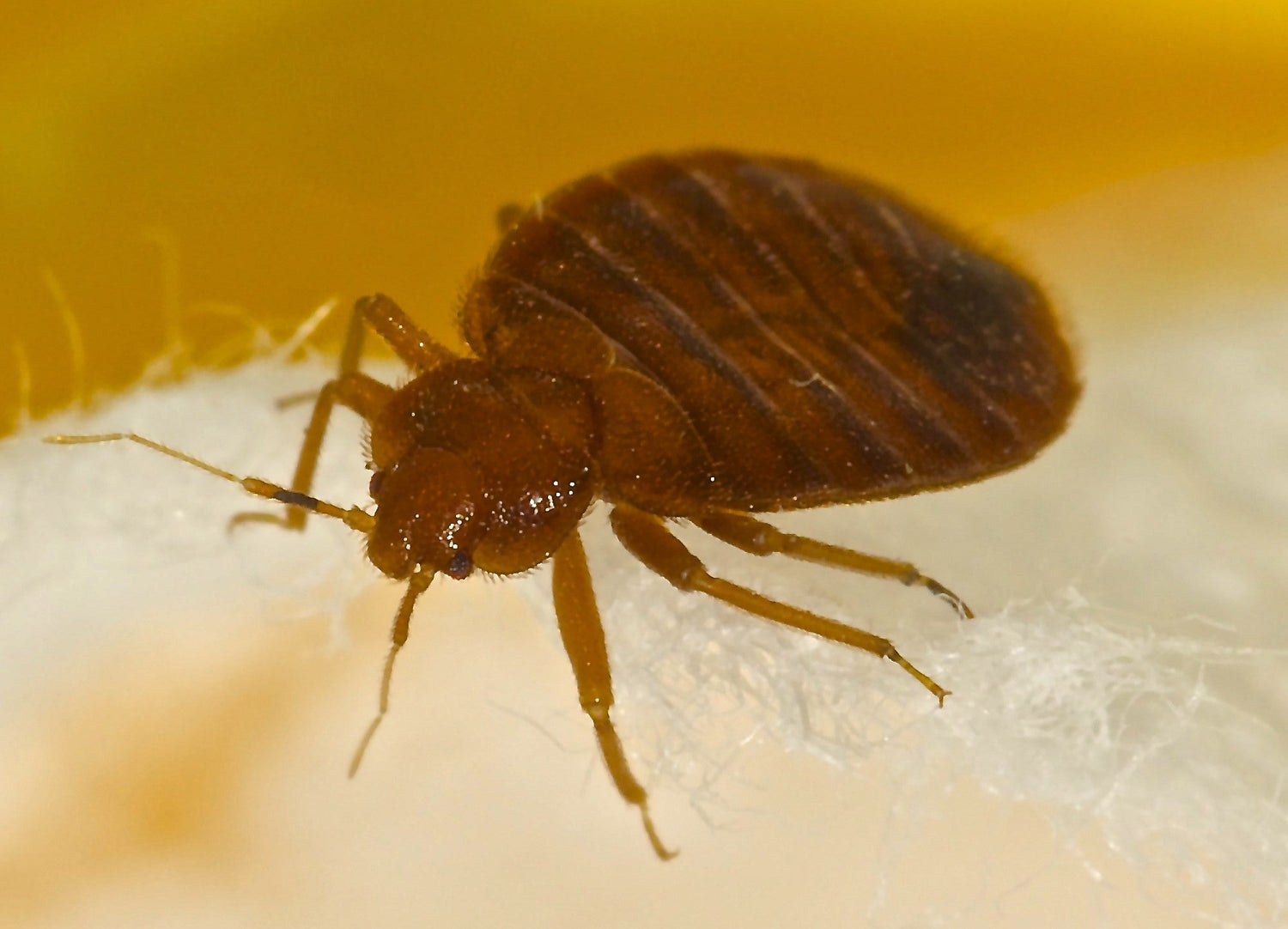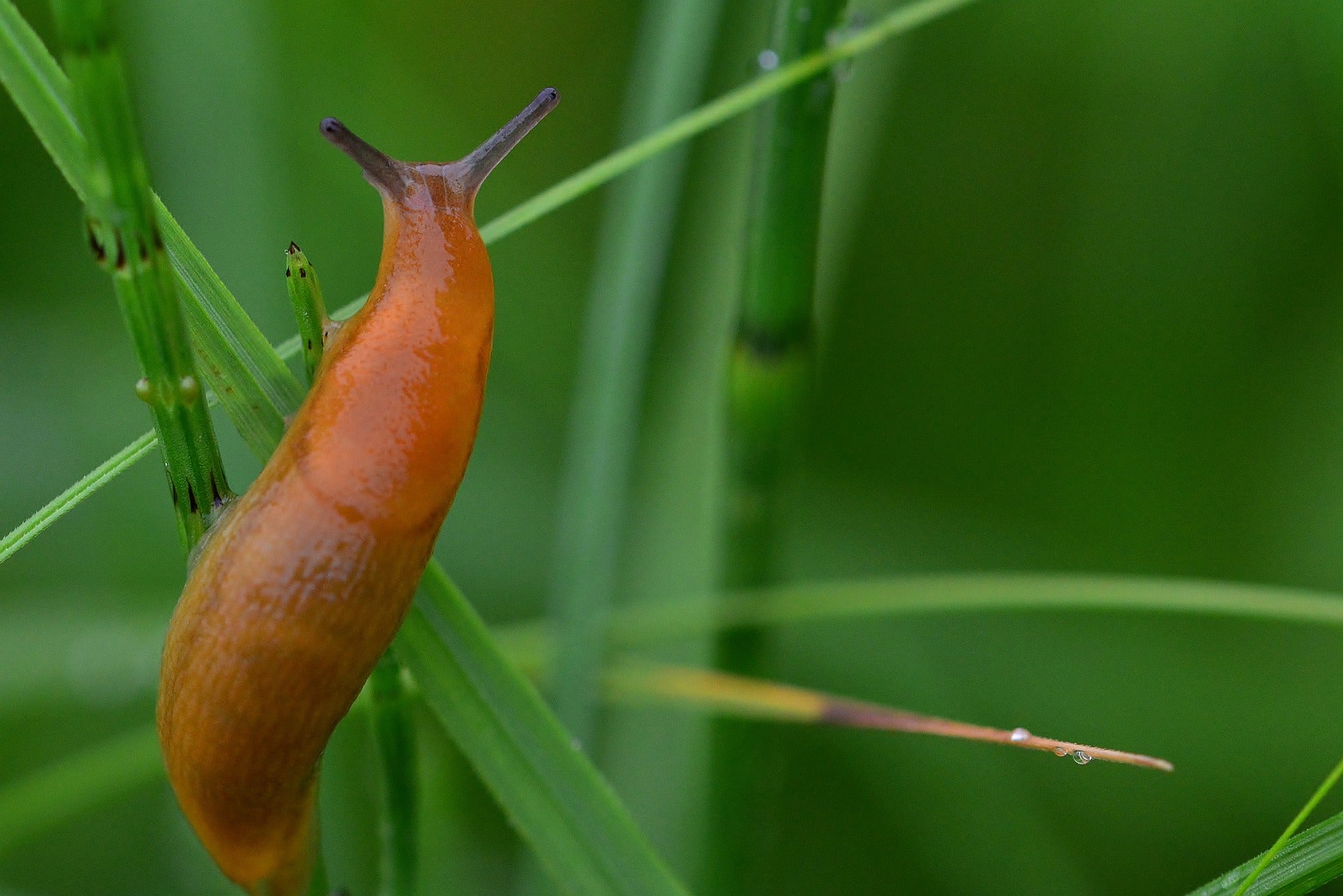Bed bugs are a common household pest in the UK, especially in cities, feeding on human blood. They live for 4-6 months and can go a long time without food, making them very hard to get rid of. Professional heat treatments followed by Nattaro Scout traps and InsectoSec tape can be the most effective treatment.
How to get rid of bed bugs in the UK
Once you’re sure you definitely have a bed bug problem, you have two options:
- Consult a professional pest controller, who will talk you through options. These may include heat treatments, or chemical insecticide treatments.
- Eliminate the bed bugs yourself. There are a range of treatment products available. Always use products approved for use in the UK, and always read the label before use.
Home treatment for bedbugs should include:
- Wash affected bedding and clothing in a hot wash (60°C) or alternatively a cold wash - put the items in a bag and then into a freezer (-17°C) for 4 days. After defrosting, if necessary items can be washed as normal.
- Vacuum the room with the infestation, including underneath and behind furniture. Contents of the vacuum should be disposed of immediately outside afterwards to avoid the bedbugs escaping from the vacuum. Ideally this should be frozen before disposing to kill the bedbugs.
- Various consumer-grade insecticides are available for bedbug treatment. These should be used with care, and always read the label.
Bed bugs after extermination
After bed bug extermination, InsectoSec bed bug tape barrier should be applied to the underside of the bedframe. This is a bed bug tape trap that is double-sided and will kill any remaining or re-infesting bedbugs, and help prevent future infestations.
The most effective bed bug treatment
The best way to get rid of bed bugs is a professional heat treatment, followed by Insectosec tape.
Chemical sprays are problematic, especially when used yourself; the instructions for them to both work and not expose yourself to toxic chemicals are very strict.
Even if you hire a professional, the bed bugs could be resistant to them, and one treatment is unlikely to be enough, when the next round of eggs hatch.
A professional heat treatment is free of chemicals, and more effective as it can more easily get into all the tiny crevices bed bugs hide themselves in.
InsectoSec tape is a biological control of bed bugs, so it's also chemical-free. Taped around the underside of the bed and headboard, it forms a complete, natural barrier. It’s also folded to provide an ideal hiding place for the bugs during the day, where they then become trapped and die.
Lasting 12 months, this gives you full peace of mind against a pest that has such a long lifecycle and can survive for so long without food.
How to check for bed bugs
The most definitive way to check for bed bugs is by purchasing a high-quality bed bug trap. Nattaro Scout bed bug trap can detect bed bugs at the lowest levels.

You can also tell if you have bed bugs by:
- Spots and stains on your mattress
- Spotting one crawling on your mattress at night (when they come out to feed)
- A musty odour
- Bites on your skin
- Clean your bedding and vacuum regularly
See more details of each of these below.
Bed bug bites
The first sign of bed lice is small, itchy red bites.
What do they look like? Bed bug bite marks are pretty indistinguishable from other pests like mosquitos and fleas, and can bite anywhere on your body.

Picture of bed bug bites
Brown/Black spots or stains
Further signs of bed mites on a mattress are tiny black spots (up to 1mm size) from bed bug faeces. These are left on the mattress during feeding.

Black/brown spots on mattress from bed bug faeces
More dense clusters of black marks can be found in their hiding places: mattress seams, headboards, bed frames and bedside furniture.
Blood spots on mattress
Similarly, tiny spots of blood can sometimes be found on a mattress where you’ve rolled over and accidentally crushed a bed bug.
Musty odour
Sometimes the presence of a large bed bug infestation gives off a musty odour (cockroaches also do this).
Identify bed bugs on mattress
The most reliable way to tell if you have bed bugs is to find and identify one in your bedroom, but they’re only active at night.
Where do bed bugs hide in the day? In hard-to-reach places, like crevices in your bed frame or headboard.
How to look for bed bugs
You can try shining a torch into the crevices in the day, or hunting around your mattress at night.
Alternatively, you can use a monitoring trap to give you a definitive answer. Nattaro Scout is the most accurate bed bug trap. Just put the lure into the trap, and check it after a few days for any bed bugs trapped inside.

Nattaro Scout bed bug trap
Bed bugs or fleas?
Unsure if the bug you saw was a bed bug or not? Other bugs that look like bed bugs include fleas, another common household blood-sucking parasite.
Fleas are much more likely if you have a pet in the house. They can jump as well as crawl, are active day and night, and live in places like your pets fur, carpets, and clothing.
They also look very different. A bed bug (before feeding) looks more like a beetle, with a round, flat body, and small head.
Fleas are long and thin, with finer, longer, back legs that look more like those you see on mosquitos.

Flea
Flea bite or bed bug?
The difference between flea and bed bugs is negligible and varies from person to person. Sadly you won’t be able to tell which pest is attacking you purely from the bites.

What do bed bugs look like
Bed bugs (Cimex Lectularius) are very small brown bugs, around 4-5mm in size.
Here’s a picture of a bed bug on a mattress:

Bed bug on sheets
Before feeding, bed bug UK adults are reddish-brown, flat and round, with a much smaller round head.
After feeding they look very different, become narrow, elongated, and bloated with blood.
Younger bed bugs are much smaller and paler than the adults.

Life stages of a bed bug
The insect goes through five growth stages from baby to adult, shedding its skin and darkening each time. They take about 5 weeks to become adults.
Bed bugs live about 4-6 months. This is one of the reasons they’re such a persistent pest.
They can also go a long time without food, and reproduce rapidly, with females laying 1-5 eggs a day, and hundreds over their lifetime.
What do bed bug eggs look like?
You’re unlikely to see the white eggs as they’re only 1mm in size, around the size of a grain of salt.
Can you see a bed bug?
Bedbugs are very small, only 4-5mm in size, similar to the size of a flea. They’re visible to the naked eye, depending on how good your eyesight is.
Do bed bugs fly?
No, they can only crawl, including up walls and across ceilings, and dropping down from the ceiling to your bed. They crawl at about the same pace as ants.
How to prevent bed bugs
As anyone who’s suffered a bed bug infestation knows, bed bug prevention is always better than cure.
Why do people get bed bugs? From transfer from an infected household, via sleeping in an affected bed, or the transfer of furniture. They’re more common in densely-packed cities, apartments and hotels.
Here are some easy tips on how to keep bed bugs away:
- Stick a bed bug tape down around your bed frame to prevent the critters ever reaching your bed.
- When staying in overnight accommodation, always check the mattress and headboard for signs of bed bugs. Take off the mattress cover and check the state of the mattress (is it dirty?) and particularly the seams for brown spots.
- Check second hand furniture being brought into your house for signs of bedbugs.
- Avoid keeping clutter around your bed. Bedbugs like to hide close to their hosts, so this will give them more places to hide.
- Clean your bedding and vacuum regularly
Related Products
Nattaro Scout bed bug traps
 Ingenious Swedish technology developed by Nattaro Labs, the leading bed bug experts worldwide. Free next day delivery.
Ingenious Swedish technology developed by Nattaro Labs, the leading bed bug experts worldwide. Free next day delivery.
InsectoSec bed bug tape
Protects your bed for a year to give you peace of mind. Free next day delivery.



